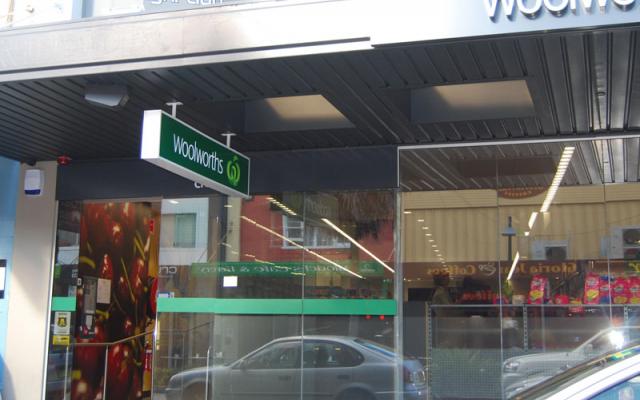Updating Retail: An Smart Investment to Business Image

In the current fast-paced retail landscape, differentiating from the competition is more vital than ever. As consumer expectations evolve and new shopping trends emerge, the importance of a thoughtfully designed and captivating retail space cannot be emphasized enough. Retail refurbishment has emerged as a powerful strategy for brands seeking to revitalize their brand identity, enhance customer experience, and ultimately boost sales. This investment not only signals a commitment to quality and innovation but also helps to cultivate a inviting, welcoming atmosphere that attracts customers in and encourages repeat visits.
Understanding what retail refurbishment entails is essential for any business aspiring to stay relevant. It involves rethinking and upgrading various aspects of a store, from floor plan and design to lighting and materials. Regardless of whether you're thinking about a complete overhaul or minor updates, recognizing the indicators that your store needs an update can create opportunities for transformative changes. By investing in refurbishment, you don't just refresh your space; you rejuvenate your brand and reinforce your connection with customers in a constantly changing market.
Comprehending Retail Refurbishment
Retail refurbishment refers to the method of modernizing and reconfiguring a retail space to enhance its appeal and functionality. This can involve a variety of changes, including visual improvements, spatial adjustments, and enhancements in consumer interaction. The objective of refurbishment is not only to rejuvenate into an existing store but also to synchronize it more effectively with contemporary market dynamics, customer demands, and business persona.
The need for retail refurbishment often arises from alterations in customer preferences, developments in tech innovations, and trends in aesthetic choices. Businesses must stay relevant in an ever-evolving landscape, and a renovated space can function as a potent tool for drawing in clients while retaining existing customers. An successful renovation can change a dilapidated space into a lively environment that attracts buyers and encourages them to explore more, ultimately leading to higher revenue.
Grasping the significance of commercial renovation goes beyond just looks; it also covers strategic planning and operation. Retailers must evaluate their existing environment, find aspects to enhance, and create a holistic refurbishment plan that addresses aesthetic, arrangement, and client involvement. Through this process, retailers can form a fresh atmosphere that not only shows their brand values but also improves the overall retail encounter.
The Impact of Refurbishment on Brand Image
Store renovation plays a significant role in shaping a brand's image and perception in the eyes of consumers. A new store interior signals that a brand is dedicated in its appearance and takes care about customer experience. This can create a powerful first impression that connects with prospective customers, making them more likely to engage with the brand and make a purchase. An updated environment can effectively convey a brand's values and mission, aligning the physical space with the overall branding strategy.
Moreover, a effectively done refurbishment can revitalize a challenged brand by creating a excitement in the marketplace. Innovative design features and better functionality can enhance the customer's journey, making shopping more pleasant and easy. As customers perceive these upgrades, they are more likely to share their favorable experiences through word-of-mouth and social media, further boosting the brand's reach and appeal. like this can help in bringing in not just current customers but also fresh audiences who might not have considered the brand before.
Lastly, maintaining a contemporary and visually pleasing retail space bolsters brand loyalty. When customers see a brand continuously putting resources in its physical presence, it fosters trust and reliability. This is particularly important in challenging markets where customer retention is vital. By guaranteeing that the store represents current trends and customer preferences, brands can establish their status as leaders in their industry, ultimately bolstering their image and driving long-term success.
Preparing and Carrying Out a Effective Refurbishment
Effective planning is vital to the success of any retail refurbishment initiative. Start by establishing your objectives precisely, whether it’s to modernize your space, improve customer experience, or increase operational efficiency. Perform a detailed analysis of your current store layout and identify areas that need improvement. Collecting input from staff and customers can provide important insights into effective practices and areas for improvement. Once you determine what you aim to achieve, develop a comprehensive plan that outlines the scope of work, budget, and timeline for the refurbishment.
Implementation is where the planning comes to life. It is necessary to partner with experienced professionals who understand retail refurbishment. Selecting the right contractors and suppliers will have a major impact on the quality of the finished project. Information sharing is key during this phase; keep all stakeholders informed about progress and any potential disruptions. Additionally, strive to decrease the impact on customers by scheduling work during off-peak hours or using temporary setups to continue operations.
Once the refurbishment is underway, consistently review progress against your objectives and timelines. Agility is crucial, as unexpected challenges may arise that demand on-the-spot decisions. After the conclusion of the project, take the time to assess the outcomes against your original objectives. Collect feedback from customers and employees to evaluate the effectiveness of the refurbishment. This reflective process will both help you understand the return on investment but will also guide future enhancements to keep your retail space consistent with evolving consumer expectations.

